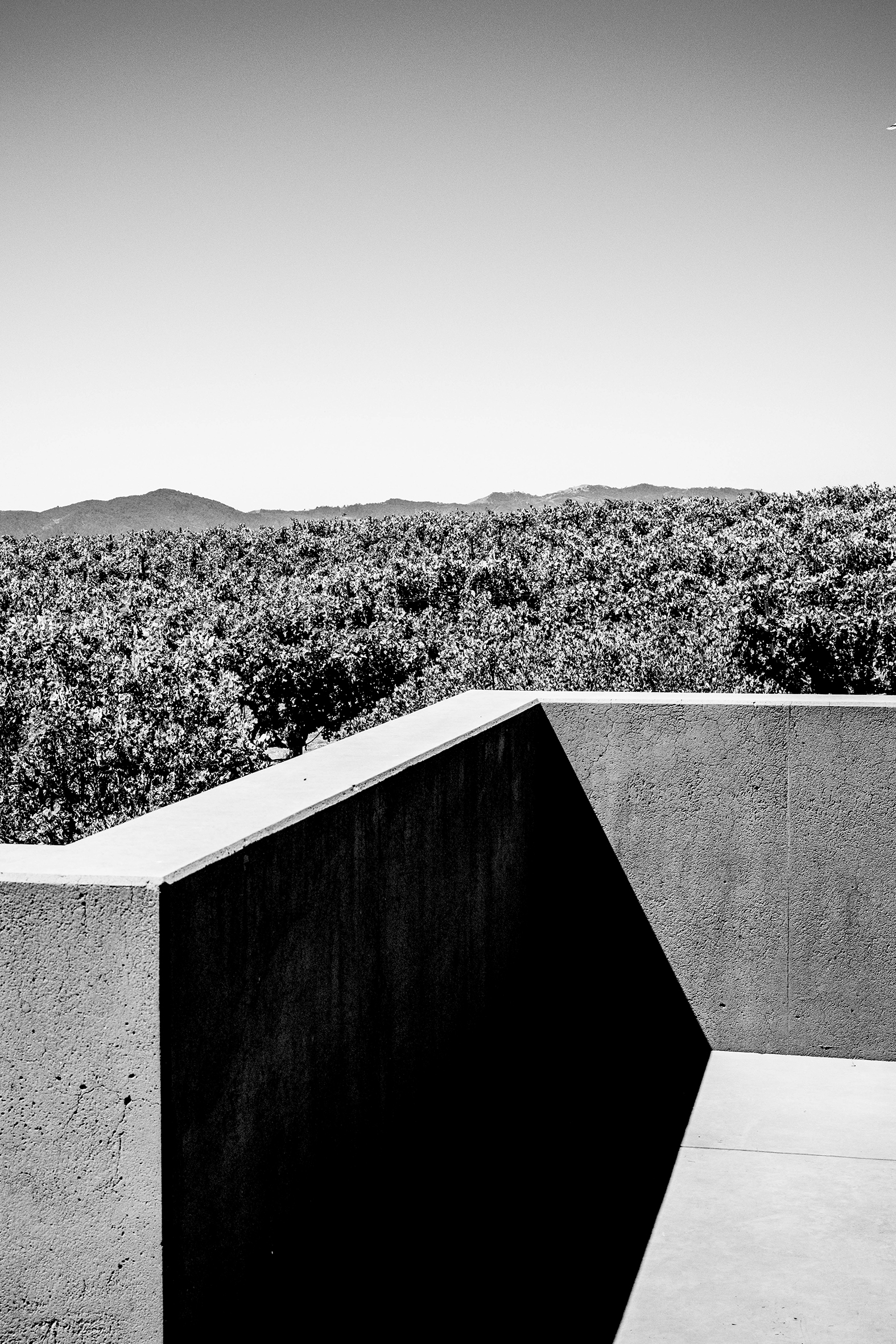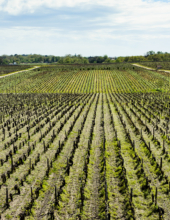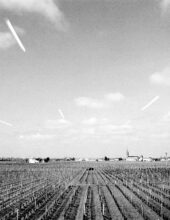14th Dec 2023
Coming on the heels of an impressive but small 2021 crop, 2022 was tracking to be a relatively effortless vintage for Napa Valley until Mother Nature decided to throw growers a heatwave curve ball during the first week of September. Many winemakers were able to bring in some fruit before and during this heat event, but a significant portion of the Bordeaux varieties were not ripe at this stage. Most Napa vintners would need to ride the potentially devastating wave for a proportion of their crop. Fortunately, similarly timed heatwaves had occurred in 2017 and 2020, so evasive strategies were ready to be deployed.

Riding the Wave
The beginning of 2022 was blissfully benign. Abundant autumn/winter rains at the end of 2021 and the start of 2022 alleviated the three-year drought that resulted in a smaller (albeit top-quality) 2021 crop, bringing relief to many growers. The 2022 budbreak was early, occurring in mid to late March or early April for most Bordeaux varieties. Late May and June saw some short, sharp heat spikes approaching the high 90s Fahrenheit and just over 100 degrees in the third week of June. At this early stage, the impact was minimal. July and most of August were sunny, with temperature highs in the mid-80s to low 90s. Up until Labor Day, it was about as smooth sailing as grape growing gets.
Most white grapes were harvested mid to late August—before the vintage's challenges began. Judging from at least fifty excellent 2022 bottled Napa Valley white wines already tasted, the vintage was exemplary for white wines. Impressive intensity and vibrancy are offset by great tension in the best Sauvignon Blanc and Chardonnay examples.
As for the still-hanging red grapes, by September 1st, an impending heatwave was in clear view. It was forecasted to descend on Northern California on September 3rd and hold for up to six days. Grape growers were braced for the impact of the oncoming Labor Day temperatures, which were set to soar over 100 degrees Fahrenheit. Winemakers brought in whatever fruit was ready in the week prior.
"We started harvesting at the end of August," said Maya Dalla Valle, winemaker at Dalla Valle in Oakville. "So, we had some fruit in before the heat. When it came, we picked right through the heat event."
Meanwhile, Christopher Tynan, winemaker at Cliff Lede in Stags Leap District, commented, "In 2022, we brought all our best blocks in before the heatwave."
"We pulled in what we could before the heatwave," said Benoit Touquette from Realm. "There was no greenness. Stags Leap and Coombsville weren't ready, but we picked Calistoga and St. Helena (Dr. Crane Vineyard)."

When the heatwave hit, it was worse than anticipated. In Napa town and Carneros, the temperature reached 116 degrees on the hottest day, with a low of 69 degrees in the evening. Yountville and Stags Leap District producers reported a high of 117 degrees. Growers in Oakville and St. Helena reported highs of 118 degrees. The impact of such extreme, sustained heat was potentially brutal. Quality would depend largely on how growers supported the vines and fruit throughout this period.
One of the most successful reported strategies in minimizing the impact of the Labor Day heatwave in 2022 was the use of overhead misters. Pioneered more than a decade ago by Napa blue chips such as Hundred Acre and Harlan Estate, these are sprinkler devices installed near the top of the canopy that deliver a continuous mist over the fruit and surrounding canopy throughout the heat event. Misters have become increasingly common around the valley in the last couple of years.
"Our misting system lowers the fruit temperature 10-15 degrees (F) within an hour," Jim Bean, owner of Brand Winery on Pritchard Hill, informed me.
"The blocks we had misters on in 2022 made a big difference," said Maya Dalla Valle.
However, the major issues with these misters are their expensive installation and the amount of water they use, which is prohibitive given that water is an increasingly precious resource in Napa.
"You hear a lot about overhead misters and sprinklers," said Aron Weinkauf, Spottswoode's vineyard manager and winemaker. "We don't want to waste our water resources on this. It is more important to have the water in the ground and to do things to help the vine. I trialed a mister system in 2012 and pulled the trial in 2017 because I realized this."
To Aron's point, the other reportedly significant tool for managing heatwaves is applying the right amount of irrigation water at the right time.
"This was the first time we had heat at this level, and the vines got through," said Kapcsandy's winemaker, Tony Arcudi. "We took the playbook of 2021 and irrigated earlier. Precise watering helps you get through. We know how to do this now. Some of our vines have roots that go down sixteen feet. The established vines are adapting to these heat episodes."
The other tool to combat the effect of searing sunlight during extreme heat events is shade cloths. These were out in full force during the heatwave of 2022, yet they were employed with a better understanding of providing aeration around the fruit zone and were made from paler or white colors that reflect sunlight rather than absorb it.
After the heatwave, there was reported dehydration of berries, as noted by the leap in brix (sugar) levels. In the days that followed, it was clear that selection and sorting would be a crucial quality factor.
"We always err on picking fruit before the damage is done," commented Aron Weinkauf. "Finding freshness and not going down the path of raisined, overripe fruit was our single focus. Some blocks were at 20 or 21 brix and then overnight went to 28 or 29 brix. There were some under-ripe, overripe characters. Harvest in 2022 was more like triage than we usually do. But, overall, our vineyard performed well."
"We had to get rid of Block 4," said Bruce Phillips from Vine Hill Ranch in Oakville. "It was hanging out after the heat. But, otherwise, what came in before the heat was great. We brought most of our fruit in before the heat."
Many Cabernet Sauvignon vines were said to have shut down for a spell after the heat event, although several winemakers commented that Cabernet Franc came through relatively unscathed.
"The Cabernet Franc is more resilient," said Tony Arcudi. "It deals with the more extreme temperatures better."
Maya Dalla Valle said the same. "The Cabernet Franc did very well after the heat, but the Cabernet Sauvignon froze. We had to sort the Cabernet Sauvignon a lot."

Shortly after the heatwave, just as growers were assessing the extent of the damage and fruit continued to trickle in, a couple of uncommon things happened.
- Some winemakers commented that fruit was coming in with elevated levels of VA (volatile acidity).
- It rained.
To be clear, there wasn't a lot of rain—just 0.5 to 1.2 inches (depending on location) in Napa Valley in mid-September. But it was enough to make berries swell. The curious case of elevated VA levels was the more concerning matter and one that no winemakers wanted to go on the record about. Many producers are still playing their 2022 blends very close to their chests. I've by now had the chance to taste at least a hundred 2022 red wine barrel sample blends. Only a couple of these had what I would consider to be noticeable VA.
Although 2022 wine grape yields for California were down overall, they were up by 5% versus 2021 for Napa Valley. However, 2021 was a particularly small vintage for the region, and 2022 is down significantly on more typical crops such as 2018 or 2019.
As for the style of the vintage, it's like two vintages in one.
Wines made predominately from fruit that came in before and/or in the early part of the heatwave are bright, fresh, and crunchy, though in a few cases, they lack the layers and gravitas that would have come with a couple more weeks (or more) on the vine. The best of those made from fruit that came in after the heatwave are rich, ripe, and opulent in that distinctively solar-vintage way—notably bigger wines.
As Maya Dalla Valle said, "You can't fight the vintage. It's a bigger vintage, and the wines are bigger."
I have tasted very impressive red wines made in both the before and after styles that are right up there with the best Napa Valley vintages. Conversely, I've tasted a few raisiny/pruney wines with rustic tannins, which did not fare well after the heat event.
This is a preliminary report. It is only possible to make final quality assessments after the blends are final and the wines are in bottle. One ace that Napa Valley has up its sleeve and that I have yet to see played is the 2023 vintage. Several winemakers pointed out that they will likely take advantage of the bumper crop of vibrant, cooler-vintage fruit that the 2023 vintage provided. Legally, 5% of another vintage can be added to the final blend. In the case of 2022, a little 2023 freshness lift should work nicely.
While 2022 was not an effortless harvest, from what I've witnessed and tasted, many top growers were ready to face the challenges with the benefit of experience. This is not the first Labor Day heatwave they've had to ride. I anticipate the bottled results may not offer the consistency of style and overall greatness of 2018, 2019, or 2021, but they won't be far off.
No 2022 Napa reviews are attached to this article, yet I’ve already published the notes of wines I’ve tasted so far that are finished or nearly finished blends. Simply type “2022 Napa” into our search bar to view these.
-
Article & Reviews by Lisa Perrotti-Brown
Photography by Johan Berglund

PRODUCERS IN THIS ARTICLE
> Show all wines sorted by scoreMore articles

Bordeaux 2023 Vintage Report and Reviews from Barrel
09th May 2024
649 tasting notes

Cathiard Vineyard New Releases
02nd May 2024
3 tasting notes

Bordeaux 2023 Preliminary Vintage Report and Reviews from Barrel
29th Apr 2024
56 tasting notes

2021 Bordeaux in Bottle and A Modest Proposal
24th Apr 2024
599 tasting notes
Show all articles